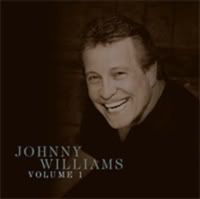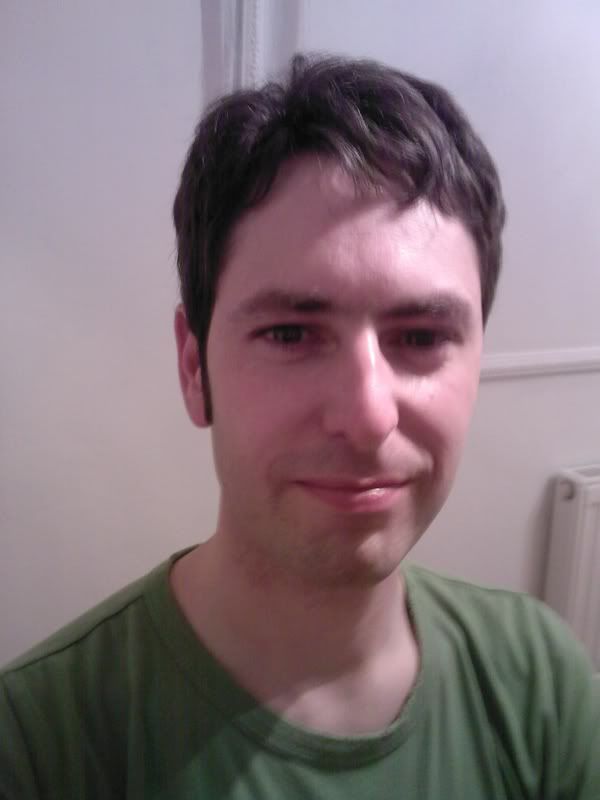Britons had come into contact with Black America directly during World War Two, socialising with G.I.s, and getting to hear some of the sounds of blues and jazz that black american soldiers listened to. This influence would continue in small pockets of rural Britain, in East Anglia for example, around the American Airforce bases of the Cold War (as it would also to an even larger extent in Germany).
Meanwhile, in the 1950s, the mainstream American recording industry was heavily promoting 'rock and roll' to the young people of Britain. It was promoted to a younger generation living in an austere economic environment, and couldn’t help but become a nationwide 'teenage' phenomenon, especially backed with the teen orientateed films of the period. 'Teddy Boy' fashion was distinctive and colourful for the time. Coffee bars provided a new form of social outlet for young people. Young Britons could not emulate the car cruising culture of their American counterparts. But they were able to interact and listen to music at the local dance hall.
But while the curious British youngster began to explore the less familiar names of rock and roll, and wonder about the blues, it would have remained a fringe curiousity and access to the recordings of black r&b artists would have been far harder to obtain, where it not for another factor in 1950s Britian. The remainder of the British public would have continued to soak up and enjoy the Elvises and Eddie Cochrans supplied by the record industry. British awareness of the history of rhythm and blues, and all related musics, would have been pegged to the pace of social change in the United States. Ironically, the awareness of black musical traditions in America would be championed by some very passionate groups of Brits in the mid 60s.
The vital bridge between American soul music and its assimilation into British cultural life is the Caribbean. Windrush led to the development of communities in numerous cities and ports where a demand for both American soul and its Caribbean variant ska existed in high enough amounts to make importation a viable business. Sound system parties became a new feature of night life in Caribbean communities such as Notting Hill in London and Toxteth in Liverpool.
What kind of nightlife culture for example was being established by the Caribbean community in Notting Hill in the late 50s? In the main, it was built on the sounds of Trinidad and Togabo, St Kitts and the surrounding islands, while being influenced by the sounds of Jamaican ska popular in the communities of Brixton and Tottenham. Sound systems were run by popular figures such as Duke Vin, Count Suckle, Baron Baker and King Dick, who conducted events, called ‘blues’ or ‘shebeens’, in basements, and even in peoples front living rooms, once all of the furniture had been moved out into the back room to make space!
“...In fifty-eight you had a lot of shebeens, you call it that, a social situation, there was nothing because of the no-coloured policy, no blacks, no coloureds in homes, entertainments, there was nothing really for black people so you had to create your own social environment. "
Such creativity in the creation of local entertainment for a new community was done in the face of the unpleasant reality that an unofficial colour ban made going to many pubs and clubs an unwelcoming and dangerous experience. Amongst the few pubs in Notting Hill where black people could make a presence were The Colville (known affectionately as ‘The Pisshouse’) and The Apollo on All Saints Road. Meanwhile, the local hall or private room was frequently off-limits to hire due to prejudice of the owner, or due to refusal of the local police to allow parties without the relevant entertainment licence - which they were unlikely to give.
“The Jamaican people created particularly the reggae, ska and bluebeat. And Fullerton, a chap called Fullerton, was a tailor and bought his first house in Talbot Road. He had a basement and we used to have blues dances and stuff. Everybody used to get down there and get down. You had people like Duke Vin who used to play with big speakers, all these things that we have now is part of our culture, discotheques were actually born out of Caribbean culture.You had a certain club that a lot of us never got into called the Montparnasse that was on Chepstow Road, the corner of Chepstow and Talbot, but round the corner was the Rio on Westbourne Park Road. Then you come further down, then Larry was in a place there with Johnnie at the corner of Ledbury Road and Westbourne Park and that was called Fiesta One. And right next door to it it had the Calypso. That what I call there, is no more than about 800 yards square. Then when you leave there you come to the corner of Colville Road and Elgin Crescent and some Barbadian guys have a club in the basement. Then Sheriff had his gym/club. It was a wild - when I say wild life you understand me - sometime you don't reach the West End. I used to hit the Grove like about four o'clock of the evening and leave there about quarter to five in the morning.”
Older local white people reacted to the arrival of British citizens from the Caribbean with fear and incomprehension, and continued to inculcate their children with these notions. Young white people living in close proximity to Caribbean neighbours should theoretically naturally progress from a love of Elvis and rock n’ roll to an appreciation of black Caribbean culture. Instead in the summer of 1958, many Teddy boys chose to go along with what their parents were telling them ought to be done about it. With the violent actions of older men as a role-model, the general attitudes of their parents, and the influence of workers for Oswald Mosley's Fascists, it was quite simple to channel some of the ‘rebellious’ attitude of rock n’ roll teddy boys and rockers into a monolithic identity to distinguish and set white youths apart. Yet some eyewitnesses attest that in fact, the 'Teddy boy' presence in the rioting was minimal, and in fact it was the wider, older community driving the hostility. Teddy boy interest in rioting and far-right meetings began to pale off, in contrast to their older brothers and parents.
The murder of Kelso Cochrane , and its unsatisfactory investigation, revealed how the Metropolitan Police themselves mirrored the attitudes of the wider population. When white people began to enter the streets, initiating the Notting Hill Riots of 1958, the police response was inadequate and focused on the wrong targets. Such insensitive policing continued to be a problem at gatherings even years afterwards:
“The police didn't take kindly to it. A lot of things made them annoyed. The music was too loud, they didn't like blacks period gathering in any kind of situation, and the selling of drinks which was outside [the law], because you couldn't get a licence, so you had to sell drinks, So you had to break the law. All this got under their wick. The shebeen didn't survive. The police, well they survived in a sense; the police used to regularly raid them, kick their boxes in, kick their speakers in, but sheer will, just natural perseverance. That aggravated the blacks no end and gave them the determination to persevere and the whole police hatred came out of that.
Anything which happens with the blacks and the police is inherent in the early stupidness of breaking their sound systems, costing them money, and indirectly disrupting their social pattern. It carried on after the riots, way into the sixties. The riots didn't do much for change. All the riots did was establish that you can't take liberties with black people, that's what it established, you've got to stand up and defend yourself. You're not going to back off.”
One more description now from an oral account of a night in 1963, which perhaps encapsulates many of the sensations and experiences of a blues dance into one account:
"Wherever you come from, you had a feel for the music. The people dem didn't too care where you come from. Dem people didn't have a prejudice like island thing, you know. For the youth dem, it was just oneness. Like when you finish work in a factory on a friday night, this is where you go, Blues dance. All de doors close and sounds just a drop in you head. Its like a refuge still. It remind you of home, the feel of it. From Blues sessions a culture develop. I remember one on Winston Road, played by a brother called Jucklin. One night in 1963 the door just kick down and policeman just step in and you hear funny sound, sound system switch off. Dem just bust up de dance! We couldn't understand it. De older people dem did know because it happen to them. A couple of brethren get fling on police van and get charge with obstructing police officers on de Monday morning"
Around the edges of this new entertainment came the most curious white teenagers interested in these unfamiliar songs. In different cities around Britain, certain individuals were investigating the music they heard, and interacting with black people. Yet for British white youths, it was all still quite different and confusing. Pete Townsend, of The Who, describes in one interview his confused image of ‘black’ culture at that time, where the reality of the black community he knew and the one in his head were somewhat blurred:
“America was still a distant and evocative IDEA to us, full of mystique. Remember we were all war-babies. brought up on free chewing gum handed out by clean-cut grinning G.I.s.. When I drove [a Lincoln Continental] to the Marquee Club … Count [Prince Miller] said ,'The Lincoln is the Rolls Royce of the United States man. Heavy car!’ The British black population were all Caribbeans. Their clubs, their drugs, their music and dancing they freely shared - but they were too close to influence us very deeply. They had a self-contained life-style; they were good people, suspicious of young Whites who saw something special in simply being black.”
Yet, curious, they continued to approach and Djs like Count Suckle saw the opportunity to establish a more mainstream club to attract them. In 1961, after establishing a reputation as one of the capital’s leading DJs, he gained a residency at the west end’s Roaring Twenties Club, where his set, featuring a mixture of R&B, Ska and Jazz, attracted audiences from far and wide. Three years on, he moved on to the famous Cue Club in Paddington and played host to many of the biggest names in the British, Jamaican and American music industry, with the likes of The Supremes, Desmond Dekker, Joe Tex, Prince Buster, Junior Walker (to name but a few) all appearing at the venue. As the years drew on, the Count increasingly concentrated his efforts on running the club, which finally closed its doors in 1988.
Quotes taken from extracts of Notting Hill in the Sixties - Mike Phillips (Lawrence and Wishart, 1991) and Behind the Masquerade: The Story of Notting Hill Carnival – Kwesi Owusu and Jacob Ross (London: Arts Media Group, 1988). Pete Townsend quotes from interview in 1985. Information on the exact nature and locations of Notting Hill cultural life in the 50s found in Counter Culture Portobello Psychogeographical History by Tom Vague, and The Notting Hill Cornival by Caspar Melville.
Sunday, February 04, 2007
Soul Britannia: Windrush
Subscribe to:
Post Comments (Atom)






No comments:
Post a Comment